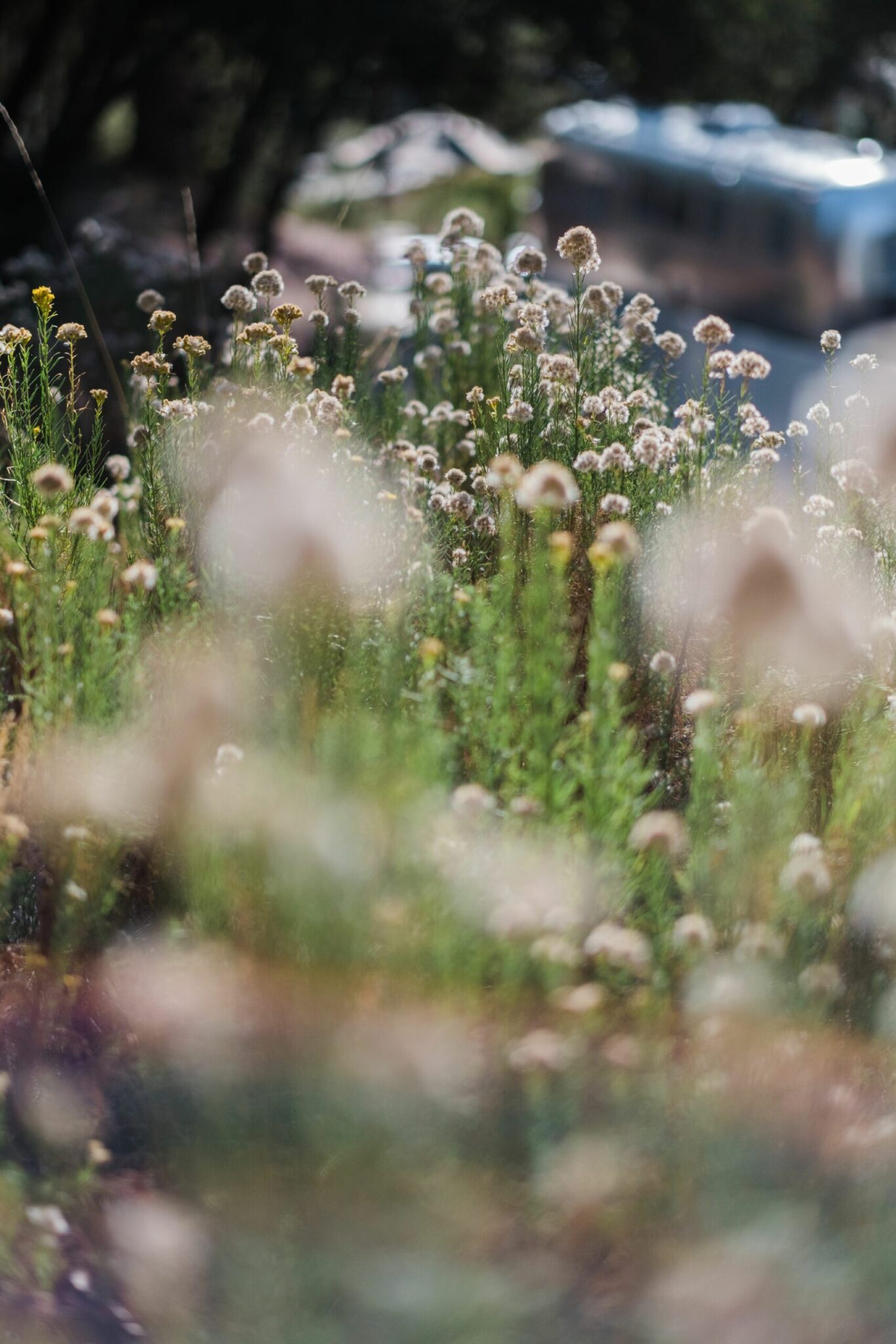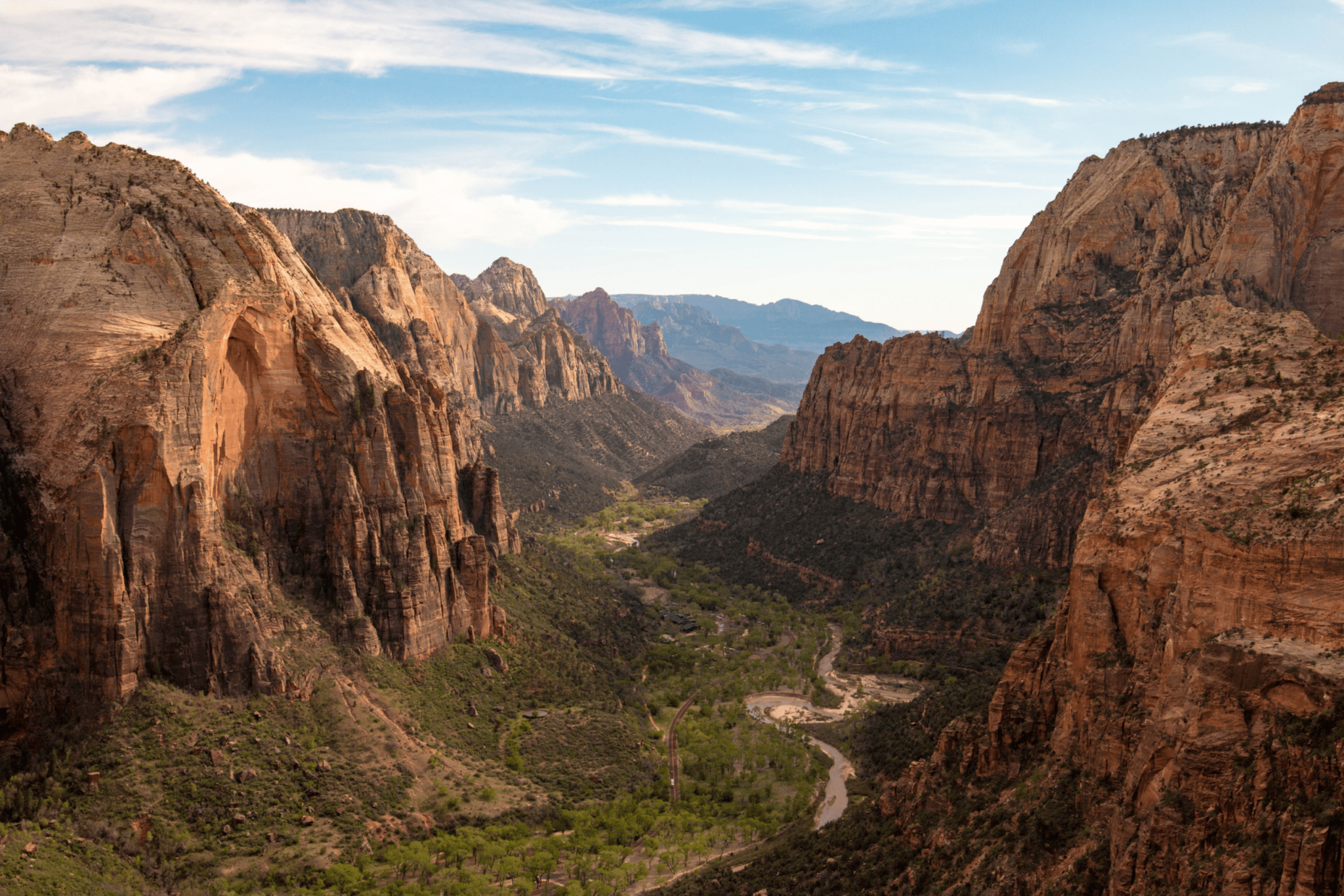This Earth Month we’re celebrating and spotlighting our innate need for nature. Over the month we will explore nature with four verbs: feel, eat, do, and protect. We’re digging into the core reason of why we go outside, feel the need to escape the city, and opt for wide open spaces.
Building a love of the outdoors is the best way to protect it, and we need to look after our home planet now more than ever. Join us on the journey at an AutoCamp location and in conversation from afar .
Giving Back: During Earth Month, we’re donating 5% of profits from our branded retail sold at each AutoCamp location’s General Store. And, as always, $1 from every room night sold goes to local conservation and stewardship.
Need More Nature? Sign up to our monthly newsletter for a regular dose of outdoor wisdom, highlights on bespoke experiences and special events, and other happenings across our locations.
If you’re planning your AutoCamp trip, don’t miss out on our limited edition package that features a “Love Your Mother” Nalgene water bottle, AutoCamp classic cap, and Earth Month stick pack.

Feel Nature
How a connection to nature helps improve health and wellness | A conversation with Florence Williams, author of “The Nature Fix”
We all know intuitively that we feel better when we can get some fresh air or get away from the noise. But few of us know why we fundamentally need this nature therapy.
As part of our Earth Month efforts, we sat down with Florence Williams, author of “The Nature Fix,” to learn more about new science behind our innate need for nature. Through our discussion, we discovered some fun facts and tips for getting outside. By getting outdoors, we reap significant health benefits for ourselves, and we also become more relaxed and can share this connection with others.
Here’s some of what we learned:
- Just 15 minutes in nature stimulates our autonomic nervous system, lowering our heart rate and calming us.
- On average, we need just 5 hours per month in nature to reset.
- Focusing on fractal patterns in nature, such as leaf patterns or canyons, reduces stress levels.
- Watching the rain or a sunset triggers “soft fascination,” which helps us linger and feel at ease.
- When we say we can smell spring, we are really smelling tree aerosols. Biochemical reactions within the wood acts as mild sedatives, which relax us.
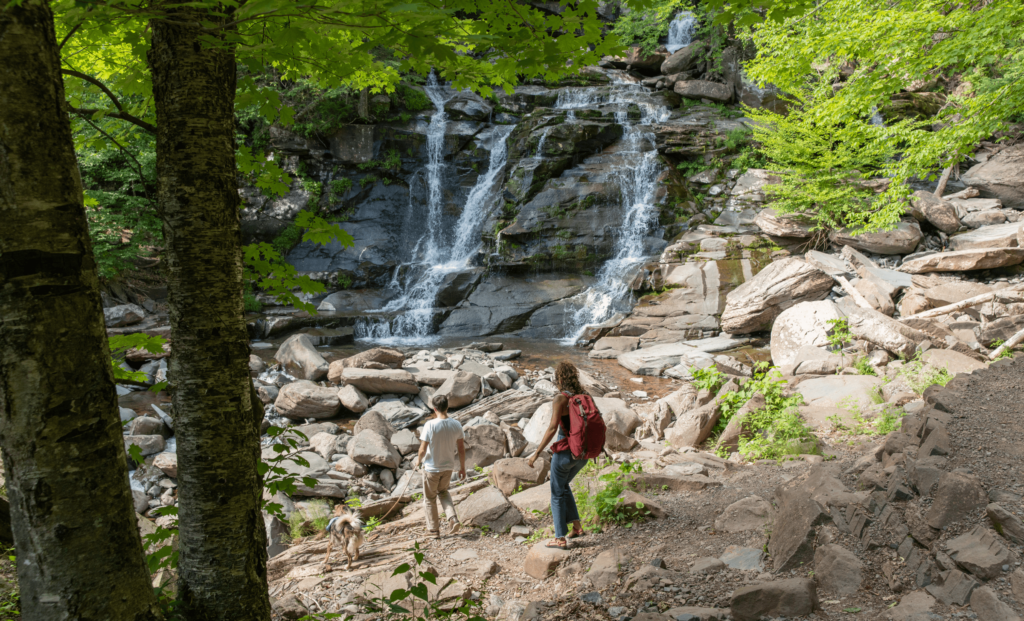
“Between every two pine trees there is a door leading to a new way of life.” -John Muir
Three takeaways from Florence:
#1 Being in nature benefits our nervous system and helps quickly induce a sense of calm. You need just 15 minutes per day, or 5 hours a month.
#2 Looking at natural patterns in the landscape or on plants can change our brainwaves for the better. Try stopping and focusing on these during a hike or walk.
#3 Nature helps us experience awe, which makes our problems feel less significant. Doing this regularly connects us to something larger than ourselves and boosts our mental outlook.
Follow Florence on Instagram here. | Find out where you can purchase “The Nature Fix” here.

Eat Nature
How to find and eat wild foods | A conversation with musician and wild foods expert, Sean Rowe
This past year we partnered with New York-based musician and wild-foods forager, Sean Rowe, for guest programming at AutoCamp Catskills and his online series, Can I Eat This. In this video segment, Sean explores a connection to nature through the diversity of nutritious wild foods, accompanied by a fellow musician. We caught up with Sean for Earth Month to share indigenous wisdom of eating nature.
Here’s some of what we learned:
- Wild garlic mustard has been found to meet and exceed the nutritional content of spinach and other, more common, healthy greens.
- Dame’s rocket, also in in the mustard family, is one of the best tasting cooked greens in the spring (it’s also invasive so don’t worry about eating it!).
- Learning taxonomy translates to foraging all over the world – while certain species may be local, families are much broader and help build connections across landscapes.
- Foraging has mental health benefits and is an important way to build connection to the outdoors, as well as draw us into what it means to be human.

“Nature itself is the best physician.” -Hippocrates
Three takeaways from Sean:
#1 Seek out knowledgeable experts and learn from them directly.
#2 Read Samuel Thayer’s 3 books in a Forager’s Harvest Series.
#3 Focus on mastering identification first. Never eat anything if you are not 100% certain of what it is.
Follow Sean’s music here and his foraging adventures here. | Watch Episode 1 | Watch Episode 2
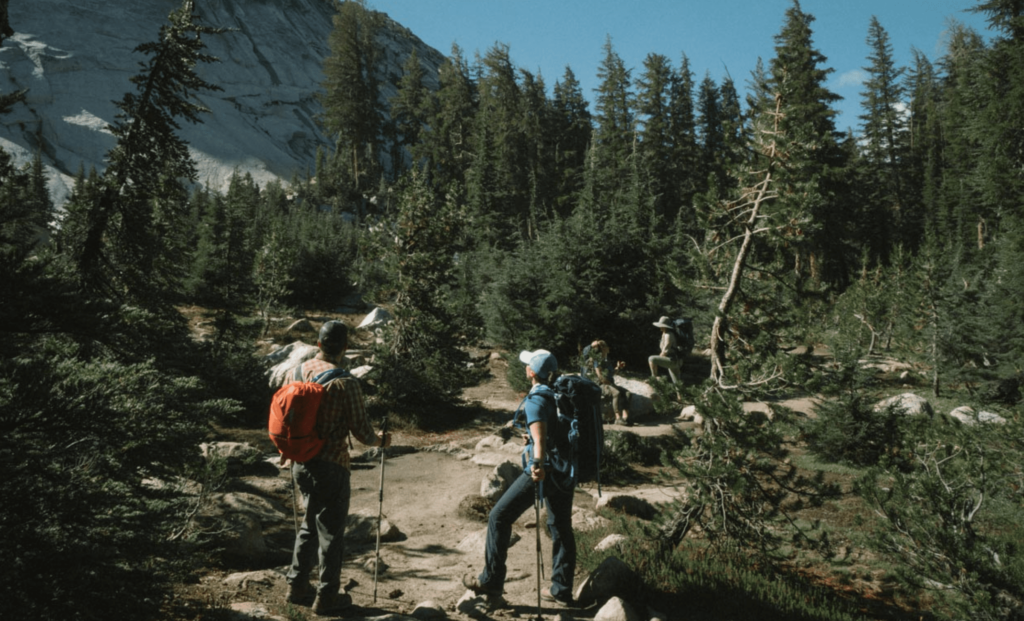
Do Nature
How to develop a practice of being outdoors | A conversation with photographer, archivist, and founder of Gathering Growth Foundation, Brian Kelley
For many, doing nature may refer to a hobby or livelihood, like hiking, birding, or biology. For photographer Brian Kelley, a curiosity turned into a passion for finding and visually archiving old growth trees. Through his organization, Gathering Growth Foundation, Brian helps to preserve the visual memory of old growth trees for future generations.
“Documenting allows future generations to know that these trees even existed. I feel an obligation to archive these trees so we can collectively remember them years and years from now.” -Brian Kelley
Here’s some of what we learned:
- It takes at least 200 years for replanted trees to become old growth. These forests are critical for carbon sequestration and healthy ecosystems.
- America’s forests once contained millions of trees from 400 to over 2000 years old.
- Since the 1600s, 90% of the virgin forests that once blanketed much of the lower 48 States have been logged.

“What we are doing to the forests of the world is but a mirror reflection of what we are doing to ourselves and to one another.” – Joyce Kilmer
Three takeaways from Brian:
#1 The first thing to do is find your local botanical garden — you can learn so much about local and regional plants there.
#2 Go to your local public lands, and initially, just enjoy the scenery. Next time, have a mission: aim to identify 5 trees or recognize elements in their habitat.
#3 Learning the names of plants creates an important relationship, it makes a big world feel smaller and more intimate.
Support the project of archiving old growth trees. | Follow Brian here.
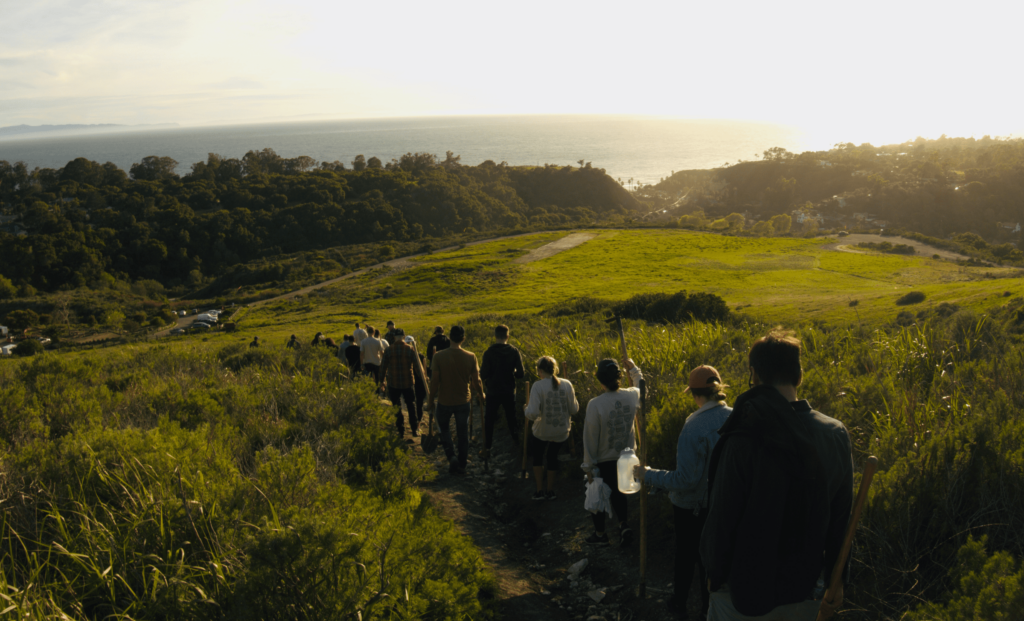
Protect Nature
How to steward and protect a love of nature | A spotlight on America’s best idea
Protecting parks was, and may still be, America’s best idea. To wrap up Earth Month, and kick off National Parks week, we’re paying tribute to our public lands and celebrating their impact. Our newest location outside Zion National Park is opening soon, and we’re hopeful that responsible outdoor recreation can become a tool to preserving our public lands.
Here’s some of what we learned:
- National Parks have over 18,000 miles of maintained trails.
- Three of the highest waterfalls in the world are located in Yosemite National Park in California.
- 840 million acres of public lands lack protection.
- 400 endangered or threatened plant and animal species call national parks their home.
- Within the park system, there are 84 million acres of land. These acres include 75,000 archeological sites and nearly 27,000 historic and prehistoric structures.
“The wilderness holds answers to more questions than we have yet learned to ask.” – Nancy Wynne Newhall
Tips on how to protect parks and public lands:
#1 Call or write your representatives to let them know you value public lands and conservation.
#2 Pass along the love of the outdoors, especially to a younger generation, to build a lifestyle around accessing public lands.
#3 Get your hands dirty and attend a trail-building or clean up event.
#4 Donate financially and help keep parks vibrant and new lands to be considered for protection.
We hope you enjoyed our Earth Month highlight. Celebrate getting outdoors, and join us at one of our locations for exciting happenings in iconic destinations.
